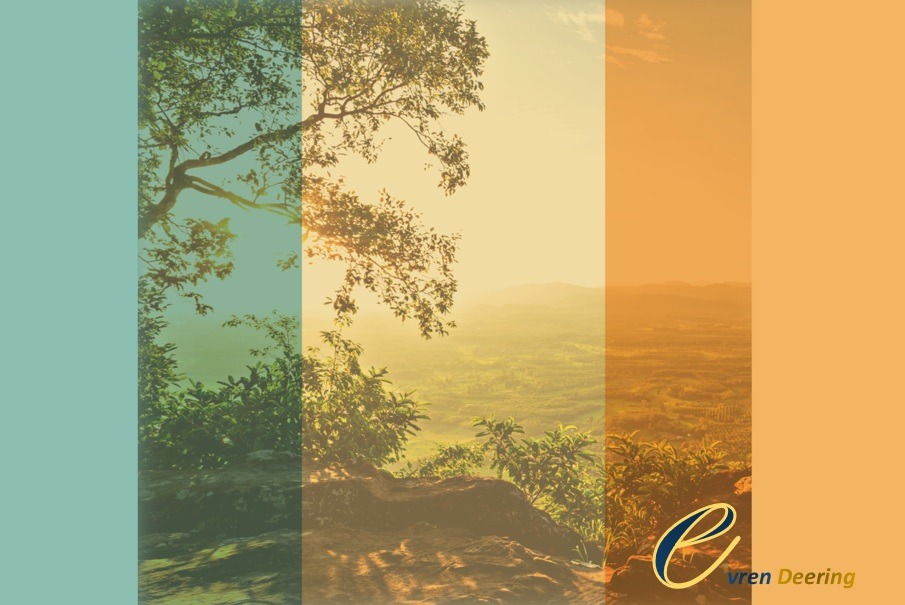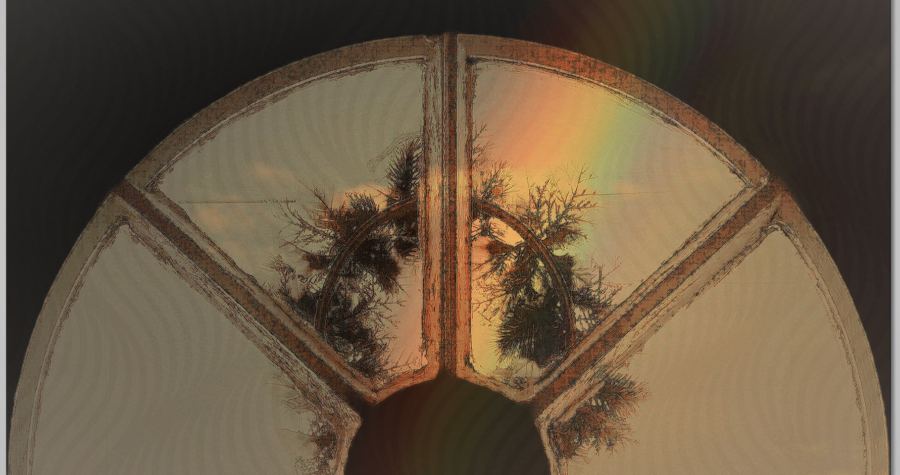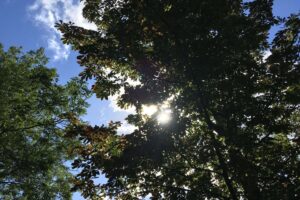When we think of sacred spaces we might think of churches, temples, cemeteries. But a sacred space can be created, or even found, anywhere.
In the hallway of my grandparents’ there’s a small window at the top of the front door, or rather windows – an arch split into four. Through these windows the light would stream in of an evening and create dancing rainbows on the walls…magic! One of those things that plants seeds into consciousness. The feelings I got, still get, from things like this, remind me to expand my vision. To see beyond the reality of the nine till five world I spent so many years terrified of. It seemed to me that most adults walked around like all their lights had gone out – they seemed switched off to something important.
The feeling of a sacred space
It’s the sort of feeling Wordsworth was famous for putting into poetry:
‘That domination which [nature] oftentimes
Exerts upon the outward face of things,
So moulds them, and endues, abstracts, combines,
Or by abrupt and unhabitual influence
Doth make one object so impress itself
Upon all others, and pervades them so,
That even the grossest minds must see and hear,
And cannot chuse but feel.’ – (extract from The Prelude.)
Even the grossest minds cannot choose. The mind is forced to feel when that domination is put forth, as though, the mind, when active, when really thinking, is literally feeling its way towards something. Trying to meet with something, without knowing why, bound by instinct.
The feeling mind
Yes, the mind feels! It’s a feeling mind not just a thinking mind… like when we read… it’s the feelings that literature opens us up to that most get to us.
One of my first memories of reading takes place in the well-lit hallway of my nan and grandad’s. I used to like rummaging through drawers, excited to see what curiosities I would find. There used to be a telephone table by the stairs. The table had a dark red seat and was made out of shiny, dark wood; it seemed very stately, sitting there; its all-important job of providing a place for the device that connected the house with the outside world. Back then, telephones put the fear of god in me. There was something unnerving about a disembodied voice. This added to the magnificence of the table’s aura.
Connection
In the drawer of the table were kept the telephone books: the yellow pages and the personal address book with the handwritten names and addresses of friends, family, and acquaintances. Sad as it might seem, this seemed to be the only place in the house specifically for books. Perhaps this is why it was kept there, in the drawer with the address book: a bible. My family are not religious, the only time you will find us in church are weddings, christenings, and funerals. Like many people we are not religious but still partake in tradition and enjoy a good party.
I don’t know where the bible came from but it is one of my earliest memories of reading on my own. And connecting with things outside of my everyday reality. It was the story of Noah’s Ark. Not the bit about the animals going in two by two that children enjoy singing about or colouring in, in school, or Sunday school. The bits in the story that stick out for me, whether from this memory or not, are the olive branch and the rainbow, not in and of themselves, but what they stand for. They symbolise vast gaps in connection being overcome. Their transcendental quality is where their true beauty lies.
The hallway had books and light and rainbows – it was a sacred space.
[This site contains affiliate links. A small commission might be earned at no additional cost to you but no money is accepted for reviews. Earnings contribute toward the running of the site and your support is much appreciated, thank-you.]




